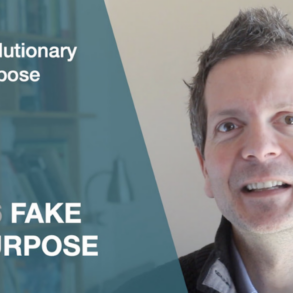By Andy Brogan and originally published at easierinc.com
Enlivening Edge Magazine’s republication of Part 1 Models of Organising is here. And Part 4 on Leadership is here.
This blog is the second of a short series inspired by a recent #NextStageRadicals event held in London on March 19th 2019 (more details here). Throughout this series I’ll be sharing presentations, insights and reflections from the event.
Context
What makes for an effective, efficient and sustainable service? Is it that you get the same response every time and that you are processed accurately according to a standardised pathway regardless of who helps you? Or is it that your unique needs, strengths and circumstances are understood and that the support you receive is configured bespoke to you based on that?
These two approaches couldn’t be more different.
- On one hand we have the mass production logic – maximum efficiency through making things more and more alike, a focus on doing things right and a preoccupation with working to standards.
- On the other we have the master craftsperson logic – efficiency as a consequence of being effective, a focus on understanding what the right things to do are and a preoccupation with working to context.
This difference is stark and goes to the heart of service work, perhaps especially so in the case of public services. Do we regard ourselves as manufacturers of outcomes, where customers or citizens are recipients of our service-products or is service something more coproduced than that, discovered through the interaction between the customers or citizens we support and the role we can play in helping them?
Insights
Speaking on this topic at the recent #NextStageRadicals event, under the theme of Radical Models of Public Service was Mark Smith, Director of Public Service Reform at Gateshead Council.
Without question his presentation created a buzz on the day and rightly so. You can watch him in action in the video below.
Inspiration
Hearing Mark speak took me back to a piece I wrote previously about the differences between service work and manufacturing. In it I noted that in manufacturing standardisation is essential to quality and efficiency. Without it parts don’t fit together, products don’t work and our ability to maintain and repair them descends into an absurdist mess of trial and error. Imagine, for example, if each time you had to replace a light-bulb it meant wading through boxes of similar looking but ever-so-slightly different bulbs to find one that fitted?
But for standardisation to work we need to be able to standardise the INPUTS and the PROCESSES, not just the products. Unless we can control the raw materials that enter the production process and then control that process then we can’t realistically expect to create standard products. Same IN + Same THROUGH = Same OUT.
Lots of service work just isn’t like this. The primary inputs to service processes are the varying needs and circumstances of citizens and customers. Often, and again especially in the case of public services, it’s this variety that good service is there to recognise and help with.
When we try to standardise it out of existence we cease to serve people and end up processing them instead; we cease to listen to their real and legitimate needs and, as Mark put it, end up focusing on working out ‘how much of what we do can we do to you?’.
So if we want services that work we need to start somewhere different, not by standardising customers and citizens and not by filtering them into process silos and standardised pathways but by…
- …creating the capability as close to our customers and citizens as possible…
- …to work with them to understand their needs, strengths and circumstances…
- …and to help them pull value from wherever it exists.
In short, effective, efficient and sustainable service through a shift:
- FROM screening, processing and providing.
- TO helping, connecting and enabling.
Action
If you want to find out more about creating services – especially public services – that work here are a few things you can do:
If you want to hear more about Mark’s story…
- consider reading his (amazing) blog series, where he gives a full and frank account of what it has taken to lead this change and what it has achieved. More details here.
If you want to learn more about the prototyping approach he has used and the “Effective>Efficient>Sustainable at Scale” logic that underpins it…
- consider contacting me or one of my colleagues at Easier Inc. for a chat. This framework and logic have underpinned a lot of our work with public and private sector services and provide a practical (and pretty rapid) way into creating better ways of working and better places to work. You can find us here.
If you want to find out more about the event that inspired this blog (including updates on and videos of the other speakers)…
- consider subscribing to this blog (below) or follow me on Twitter.
Also… search #NextStageRadicals on Twitter for more from those who attended.
Republished with permission of the author.
Featured Image/graphic link added by Enlivening Edge Magazine.




